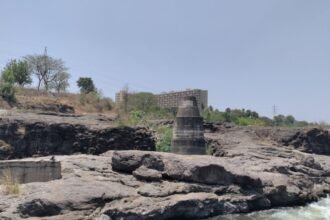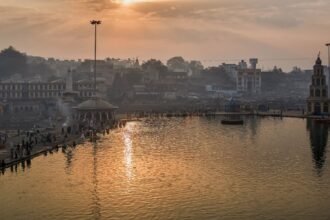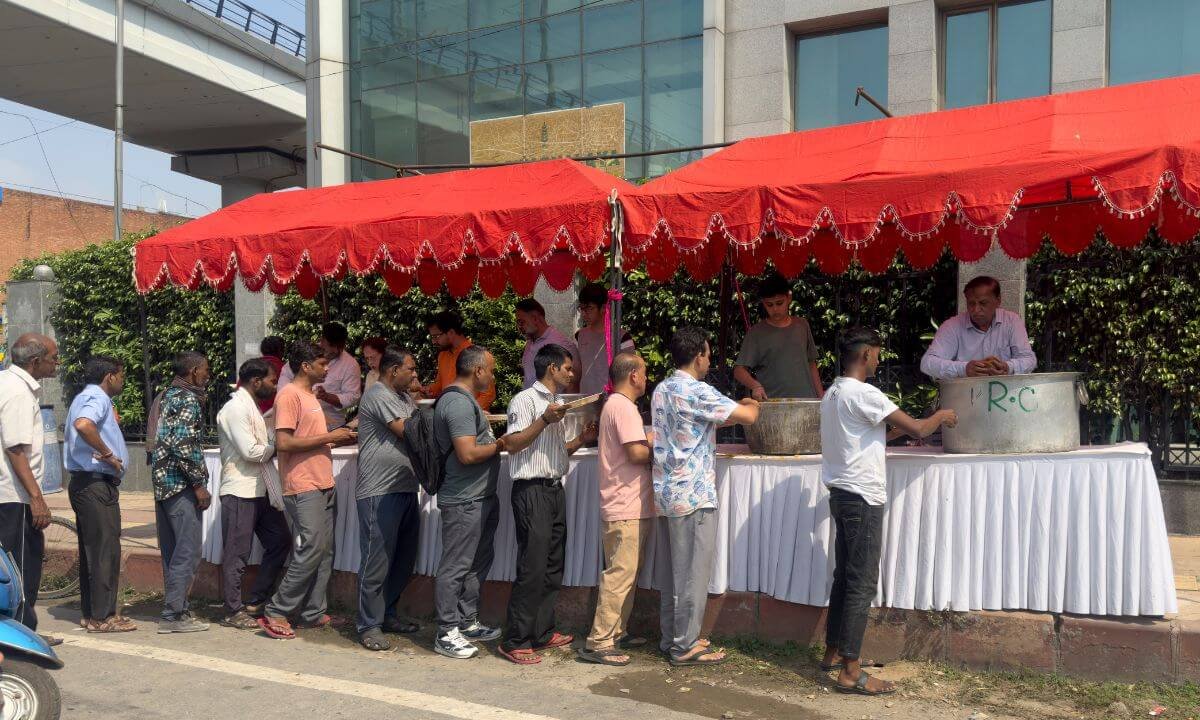Every Kumbh Mela is a huge gathering of people who are both spiritually devoted and interested in different kinds of food. To feed millions of people every day, you need to plan very well, keep things clean, and have strong ideals about service. This blog post talks on the important issue of Nashik Kumbh Mela food hygiene. We focus on langars (free kitchens), local foods, and the protocols that are in place to make sure the food is safe.
- The Role of Langars: Feeding with Faith
- Kumbh Mela Food Hygiene Protocols
- Langar Zones: Safe Places to Eat
- Local Nashik Cuisine: What to Try (Safely)
- Safety Tips:
- Volunteer Kitchens: The Heart of Seva
- Problems and Ways to Make Things Better in the Future
- For 2027, Nashik authorities are planning:
- Conclusion
The Role of Langars: Feeding with Faith
Langars during the Kumbh are more than simply places to eat; they are also ways to show your love and serve others. Religious groups, ashrams, and volunteer groups run these kitchens, which serve thousands of pilgrims every day at no cost.
Common features of langars:
- Open-air or semi-permanent structures
- Mass seating areas (often on mats or benches)
- Simple meals include dal, rice, roti, sabzi, khichdi, and sweets.
- Operated by volunteers (sevadars) who cook, clean, and serve
Langars are set up all around the Mela grounds, close to the Akharas, ghats, and big tent cities. The Kumbh is open to people of all castes, genders, and religions, which is what makes it so welcoming.
Kumbh Mela Food Hygiene Protocols
People have been more cognisant of health and safety issues in recent years, which has made kumbh mela food hygiene a top priority. Because of the size, even slight mistakes could lead to big outbreaks of illness, thus hygiene is a must.
Kumbh Mela Food Hygiene protocols now include:
- Mandatory handwashing stations at langars
- Cooking using water that has been boiled or filtered
- People who work with food wearing gloves, aprons, and head coverings
- Local health departments and the FSSAI check on them every day.
- Keeping raw and cooked food separate to keep them from becoming mixed up
- Waste management bins placed at regular intervals
Volunteers also learn the basics of how to handle food, especially when they are making meals for children, the elderly, or people who are fasting.
Langar Zones: Safe Places to Eat
Authorities have drawn out maps of specific langar zones in Nashik and Trimbakeshwar to enable pilgrims find their way.
Key Langar Clusters in Kumbh 2027:
Ramkund Zone – Near Panchavati area; ideal for morning meals
Tapovan Cluster – Operated by several Punjab-based ashrams
Trimbakeshwar Langar Belt: Near the shrine for easy access for pilgrims
Akhara Zones – Each Akhara usually operates its own langar
International Camps – Offer multi-cuisine or sattvic food for global visitors
Official apps and maps given out at entry points will also have information about where to get langar.
Local Nashik Cuisine: What to Try (Safely)
Langars provide the essential meals, but local food booths also serve a variety of Maharashtrian dishes. But as always, be careful and only shop at places that have been verified for hygiene.
Here are some of the most popular dishes at Kumbh:
Misal Pav – A spicy lentil-based dish with bread
Sabudana Khichdi – Ideal for fasting devotees
Puran Poli – A sweet flatbread made of jaggery and lentils
Shengdana Ladoo & Chikki – Peanut-based sweets, perfect for snacking
Masala Buttermilk – A refreshing drink in summer
Safety Tips:
- Eat at stalls with clean counters and covered food
- Avoid pre-cut fruits or uncovered sweets exposed to dust
- Opt for freshly prepared meals over reheated items
- Drink packaged or purified water only
Stalls with a “Hygiene Verified” badge will show that they have taken part in food safety checks run by the government or an NGO.
Volunteer Kitchens: The Heart of Seva
There are thousands of volunteers working day and night to make sure that every meal at the Mela is heated.
These people:
- Get up early dawn to make big dinners
- Wash the dishes, chop the vegetables, and serve with a smile.
- Often pay for the meals themselves or get donations to do so.
- Operate kitchens with military-level coordination and love
Some large kitchens can feed 10,000–50,000 pilgrims a day, running on zero-waste models and using eco-friendly utensils like leaf plates and clay cups.
These kitchens are a testament to spiritual service in action—where food becomes a form of devotion.
Also read : Women Safety Kumbh Mela: Tents, Helplines & Empowerment
Problems and Ways to Make Things Better in the Future
While great strides have been made in kumbh mela food hygiene, a few challenges remain:
Managing hygiene during monsoons or floods
Ensuring small independent stalls follow norms
Waste segregation and composting in massive kitchens
Educating pilgrims to avoid food waste and littering
For 2027, Nashik authorities are planning:
Mobile inspection vans with food testing kits
Training modules in local languages for volunteers
QR-coded licenses for all food stalls and langars
AI-supported crowd flow systems to prevent bottlenecks in meal lines
Conclusion
Food at the Kumbh Mela is not just nourishment—it’s a sacred offering, made possible through service, faith, and collective effort. The Kumbh is setting a new global benchmark for safe mass dining with changing hygiene standards, clever planning, and spiritual seva.
You may also help as a pilgrim by choosing clean langars, supporting recognised merchants, and being aware of what you consume.
At the Kumbh, every bite is a blessing, and the ultimate prasad is safety.





